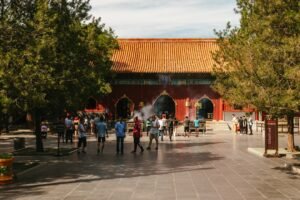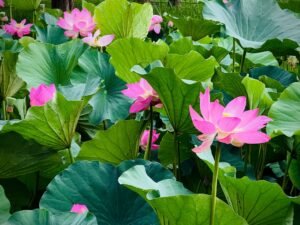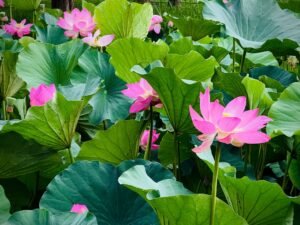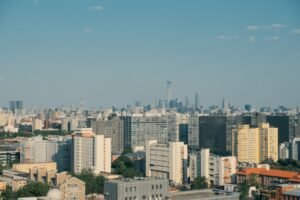
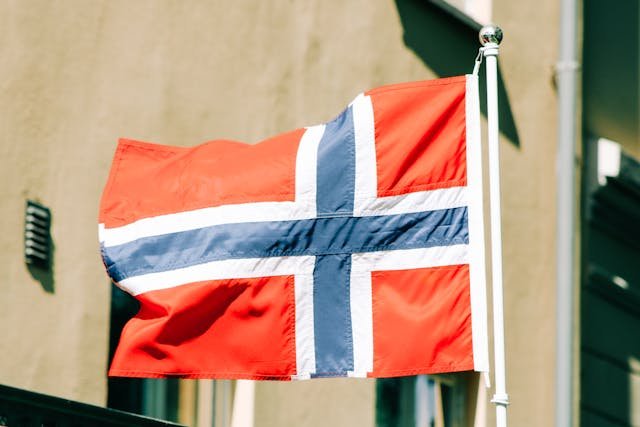
Discussing Politics and Government in Norwegian
Table of Contents
ToggleIntroduction
Politics and government in Norway are characterized by a long tradition of demokrati (democracy), folkevalgte representanter (elected representatives), and a robust velferdsstat (welfare state). The Norwegian political system is based on principles of representativt demokrati (representative democracy), rettsstatsprinsipper (rule of law principles), and parlamentarisme (parliamentarism). This article provides an overview of the main features of the political system in Norway, including the various politiske partier (political parties), the valgprosessen (election process), and the structure of the regjering (government).
Political Parties
Norway has a multi-party system with several politiske partier that represent a wide range of ideologies and interests. The major parties include Arbeiderpartiet (Labour Party), Høyre (Conservative Party), Fremskrittspartiet (Progress Party), Senterpartiet (Centre Party), Venstre (Liberal Party), Sosialistisk Venstreparti (Socialist Left Party), Miljøpartiet De Grønne (Green Party), and Kristelig Folkeparti (Christian Democratic Party). Each of these parties has its own platform and policies that cater to different segments of the Norwegian populace.
Arbeiderpartiet focuses on social welfare, workers’ rights, and economic equality. Høyre emphasizes free market policies, reduced government intervention, and individual liberties. Fremskrittspartiet advocates for lower taxes, reduced immigration, and privatization of public services. Senterpartiet champions rural interests, decentralization, and agricultural policies. Venstre supports environmental protection, education reforms, and civil liberties. Sosialistisk Venstreparti promotes socialism, environmentalism, and equality. Miljøpartiet De Grønne is dedicated to sustainability, climate action, and green energy. Kristelig Folkeparti upholds Christian values, family policies, and humanitarian aid.
Dialogue
Velger 1: “Hvilket parti stemmer du på i år?” (Which party are you voting for this year?) Velger 2: “Jeg vurderer å stemme på Arbeiderpartiet fordi de fokuserer på velferd og sosial rettferdighet.” (I’m considering voting for the Labour Party because they focus on welfare and social justice.) Velger 1: “Jeg er mer tiltrukket av Høyres politikk om økonomisk vekst og lavere skatter.” (I’m more attracted to the Conservative Party’s policies on economic growth and lower taxes.)
Velger 2: “Hva synes du om regjeringens håndtering av klimaendringene?” (What do you think about the government’s handling of climate change?) Velger 1: “Jeg synes Miljøpartiet De Grønne har de beste løsningene for miljøpolitikken.” (I think the Green Party has the best solutions for environmental policy.) Velger 2: “Ja, men jeg er bekymret for hvordan deres politikk vil påvirke økonomien.” (Yes, but I’m concerned about how their policies will impact the economy.)
The Election Process
The valgprosessen in Norway is transparent and democratic. General elections are held every four years to elect representatives to the Storting (Parliament). “Valgdagen er en viktig dag for demokratiet,” as Norwegians often say, meaning “Election day is an important day for democracy.” On this day, eligible voters cast their stemmer (votes) to choose their preferred candidates and parties. The system is designed to ensure proporsjonal representasjon (proportional representation), which means that the number of seats a party gets in the Storting is roughly proportional to the number of votes it receives.
Norway also holds lokalvalg (local elections) to choose representatives for kommuner (municipalities) and fylker (counties). These elections determine who will manage local services and regional responsibilities.
Valgkamp (election campaign) periods are marked by vigorous debates, political advertisements, and community engagements. Political parties present their valgprogram (election manifesto) outlining their policies and plans if elected.
Dialogue
Velger 1: “Hvordan fungerer valgsystemet i Norge?” (How does the electoral system work in Norway?) Velger 2: “Vi har proporsjonal representasjon, så antall seter et parti får i Stortinget tilsvarer antall stemmer de mottar.” (We have proportional representation, so the number of seats a party gets in the Parliament corresponds to the number of votes they receive.) Velger 1: “Hva med lokalvalg?” (What about local elections?) Velger 2: “Lokalvalg avholdes for å velge representanter til kommuner og fylker, som styrer lokale og regionale saker.” (Local elections are held to choose representatives for municipalities and counties, which manage local and regional matters.)
Government Structure
The Norwegian regjering is based on a parliamentary system, which means that the executive branch derives its legitimacy from, and is accountable to, the legislature (Stortinget). The head of government is the statsminister (Prime Minister), who is usually the leader of the majority party or coalition in the Storting. The regjering is responsible for implementing laws and managing the day-to-day affairs of the state.
The regjering is divided into various departementer (ministries), each headed by a minister responsible for specific areas such as health, education, finance, and defense. These ministries work to formulate and implement policies in their respective domains.
Dialogue
Borger 1: “Hvordan fungerer regjeringen?” (How does the government function?) Borger 2: “Regjeringen implementerer lover og styrer daglige saker, mens statsministeren leder regjeringen.” (The government implements laws and manages daily affairs, while the Prime Minister leads the government.) Borger 1: “Hvordan velges statsministeren?” (How is the Prime Minister chosen?) Borger 2: “Statsministeren er vanligvis lederen av flertallspartiet eller koalisjonen i Stortinget.” (The Prime Minister is usually the leader of the majority party or coalition in the Parliament.)
Borger 1: “Hvem er vår nåværende statsminister?” (Who is our current Prime Minister?) Borger 2: “Vår nåværende statsminister er Jonas Gahr Støre fra Arbeiderpartiet.” (Our current Prime Minister is Jonas Gahr Støre from the Labour Party.) Borger 1: “Hva er noen av de viktigste sakene regjeringen arbeider med nå?” (What are some of the major issues the government is working on now?) Borger 2: “De fokuserer på helsevesenet, klimaendringer, og utdanningsreformer.” (They are focusing on healthcare, climate change, and education reforms.)
Local Government
In addition to the national regjering, Norway also has a system of local government. Kommuner (municipalities) and fylker (counties) have significant responsibilities for providing local services such as education, healthcare, and infrastructure. Local elections are held every four years, and like the national elections, they are marked by high voter participation and robust democratic practices.
Kommuner are responsible for local matters such as primary education, local roads, and social services. Fylker handle regional responsibilities including secondary education, public transport, and regional development.
Dialogue
Innbygger 1: “Hvordan fungerer lokalt styre i Norge?” (How does local governance work in Norway?) Innbygger 2: “Kommuner tar seg av lokale tjenester som skoler og veier, mens fylker håndterer regionale oppgaver som videregående skoler og kollektivtransport.” (Municipalities take care of local services like schools and roads, while counties handle regional tasks like high schools and public transport.)
Innbygger 1: “Hvordan påvirker lokale valg vårt daglige liv?” (How do local elections affect our daily lives?) Innbygger 2: “De bestemmer hvem som skal lede våre lokale tjenester og hvordan ressurser fordeles i vårt nærmiljø.” (They decide who will lead our local services and how resources are allocated in our community.)
Political Culture
The political culture in Norway is characterized by a high level of civic engagement and trust in public institutions. “Politisk deltakelse er en del av vår kultur,” meaning “Political participation is a part of our culture.” Norwegians take pride in their democratic traditions and are actively involved in political discussions and decision-making processes.
Politisk debatt (political debate) is a common feature in Norwegian society, and citizens are encouraged to voice their opinions on various issues. Samfunnsdeltakelse (community involvement) is highly valued, and there are numerous opportunities for individuals to get involved in local and national politics.
Dialogue
Innbygger 1: “Hvordan kan vi forbedre det politiske systemet i Norge?” (How can we improve the political system in Norway?) Innbygger 2: “Jeg tror vi må fokusere mer på transparens og bekjempe korrupsjon.” (I think we need to focus more on transparency and combating corruption.) Innbygger 1: “Enig, og vi bør også styrke utdanningen om demokratiske prosesser.” (Agreed, and we should also enhance education about democratic processes.)
Innbygger 1: “Hva tenker du om ungdommens engasjement i politikken?” (What do you think about the youth’s engagement in politics?) Innbygger 2: “Det er fantastisk! Unge mennesker bringer nye perspektiver og energi til politiske debatter.” (It’s fantastic! Young people bring new perspectives and energy to political debates.) Innbygger 1: “Ja, deres deltakelse er avgjørende for fremtidens demokrati.” (Yes, their participation is crucial for the future of democracy.)
Upcoming Elections
In the coming years, Norway will continue to hold its regular national and local elections. Here is an overview of upcoming elections starting from 2025:
- Stortingsvalg 2025 (Parliamentary election): Scheduled for September 2025. This election will determine the composition of the Storting (Parliament) and ultimately influence the formation of the next regjering (government).
- Sámi Parliament election 2025: The election for the Sámediggi (Sámi Parliament) is also held in 2025, coinciding with the national parliamentary elections. This parliament represents the Sámi people and addresses their specific issues and concerns.
- Kommunestyre- og fylkestingsvalg 2027 (Municipal and County Council Elections): Scheduled for September 2027. These elections will determine the representatives for kommuner (municipalities) and fylker (counties), affecting local and regional governance.
- Stortingsvalg 2029 (Parliamentary election): Scheduled for September 2029. This will again determine the composition of the national parliament and the direction of national policies.
These elections are critical in shaping Norway’s political landscape and addressing key issues such as climate change, economic policy, and social welfare.
Vocabulary List
- Demokrati: Democracy
- Folkevalgte representanter: Elected representatives
- Velferdsstat: Welfare state
- Representativt demokrati: Representative democracy
- Rettstatsprinsipper: Rule of law principles
- Parlamentarisme: Parliamentarism
- Politiske partier: Political parties
- Valgprosessen: Election process
- Regjering: Government
- Storting: Parliament
- Proporsjonal representasjon: Proportional representation
- Lokalvalg: Local elections
- Kommuner: Municipalities
- Fylker: Counties
- Statsminister: Prime Minister
- Departementer: Ministries
- Minister: Minister
- Borger: Citizen
- Innbygger: Resident
- Politisk debatt: Political debate
- Samfunnsdeltakelse: Community involvement
- Valgkamp: Election campaign
- Valgprogram: Election manifesto
- Stortingsvalg: Parliamentary election
- Sámediggi: Sámi Parliament
Quiz
- Hva er hovedlovgivende organ i Norge?
- A. Regjering
- B. Storting
- C. Kommuner
- D. Fylker
- Hvilket politisk parti fokuserer på miljømessig bærekraft og klimaaksjon?
- A. Arbeiderpartiet
- B. Høyre
- C. Miljøpartiet De Grønne
- D. Fremskrittspartiet
- Hva sikrer “proporsjonal representasjon” i det norske valgsystemet?
- A. Lik representasjon for alle regioner
- B. Proporsjonale seter i Stortinget basert på antall stemmer
- C. Direkte valg av statsminister
- D. Fast antall seter for hvert parti
- Hvor ofte holdes stortingsvalg i Norge?
- A. Hvert andre år
- B. Hvert tredje år
- C. Hvert fjerde år
- D. Hvert femte år
- Hvilke ansvar har “kommuner” i Norge?
- A. Nasjonalt forsvar og utenrikspolitikk
- B. Lokal utdanning, veier og sosiale tjenester
- C. Regional utvikling og kollektivtransport
- D. Pengepolitikk og bankregulering
If you want to learn Norwegian, you can register for classes here. We look forward to hearing from you and helping you become fluent in Norwegian.

